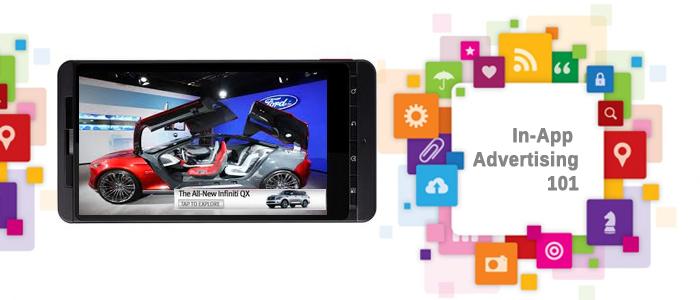Digital marketing has in recent years proven to be one of the most effective forms of advertisement. It has not only grown to be a major source of revenue for app developers but also the best alternative for mobile device users. This is because mobile phone users spend more time with apps compared to the time spent with web browsers. Awarding In-App Marketing as one of the best options in the industry.
In-App Marketing can simply be defined as the online promotion of an in-app ad – an advertisement displayed within a cell phone application. Some of the common ad units used to display these ads includes;
- an overlay
- mobile interstitial
- a banner situated at top/ bottom of the screen
The reason as to why this type of digital marketing is efficient enough is because it engages the user more and as a result responds to an evolution that delineate how people are increasingly getting involved with their mobile devices. Research also shows that in-app marketing is more effective than the typical standard banner marketing.
The study further shows that internet users rarely click on ordinary online banners since they prefer to explore the world of in-app ads which have proven to be a one of a kind web browsing experience. As opposed to the regular banners, the ‘in-app’ does not contain visual clutter and instead is unobtrusive making it even more entertaining to explore.
The user has the advantage of interacting with an ad using a platform of his / her choice since in-app ads can be available in more than a single type of mobile Operating System (OS). This is made possible so as to cater for the different groups of internet users using different internet media.
Thriving brands today look at the mobile platform from a 360⁰ point of view. These brands try to figure out how to capture more users in the market so as to ensure that there is enough consumer satisfaction when it comes to marketing. Like any other mobile marketing strategy, in-app marketing is motivated by three main factors. Namely;
- Drivers
- Trends
- Constraints
Drivers are the implications – positive, for example larger digital budgets; the trends include latest technology that other marketers are trying out in the industry such as Rich Media and HTML5. Constraints include factors like fragmentation and privacy which to date hinder some of the brands willing to put an end to large-scale mobile campaigns.
A point to note is that in-app marketers need to ensure that their ads are engaging enough to draw the user attention and should at all costs avoid becoming intrusive.


